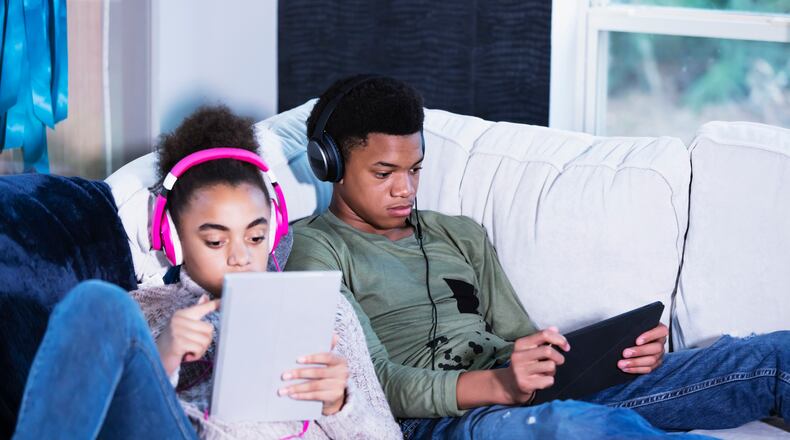• HOW TO GET HELP: Community Resource Guide
While screens can be difficult on the eyes, what people look at on their phones can be difficult on their psyches. Social media can be a fun place to connect, but it has many negative aspects that researchers have studied over the last 20 years.
A recent study shows higher amounts of screen time were linked to lower amounts of brain white matter, which is related to the development of literacy and language skills.
So the question is how much screen time is too much screen time? According to an article on Dayton Children’s Hospital’s website, there should be different amounts of screen time for different ages of kids.
- Infant: Avoid screen time.
- Preschool: Limit non-educational screen time, and exposure to social media. Co-watch the child’s activity.
- Elementary: Limit social media, start talking about media literacy, continue to co-watch with the child.
- Tweens: Consider requests for access and work on a family plan for social media use.
- Teens: Continue conversations about social media use, risks and benefits. Help the teen problem-solve.
As a parent or an adult, it’s important to employ healthy boundaries with social media and screens. Telling a child to turn off their screens while scrolling through the most recent social posts will help. Also, try not to check the work email when “off the clock.”
Dayton Children’s Hospital has these tips for limiting screen time:
- Set up a charging station in a common area to leave everyone’s devices at night. This might mean using an old-fashioned alarm clock in the bedrooms to wake up instead, but those phones will no longer be a late-night distraction.
- Designate the dinner table a “no technology zone.” No devices will be invited to share a meal with the family. In the meantime, use conversation starters to learn more about each other.
- Pick important times of the day, like when everyone first gets home from school or work, to put the phones away. Catch up with the family about what they learned during the day or how they felt at different points of the day.
- Add more phone-free activities. Keeping a visual list of non-screen activities will help the family when they are looking for something to do. Set up certain time periods for certain activities like arts, crafts or board games.
About the Author
